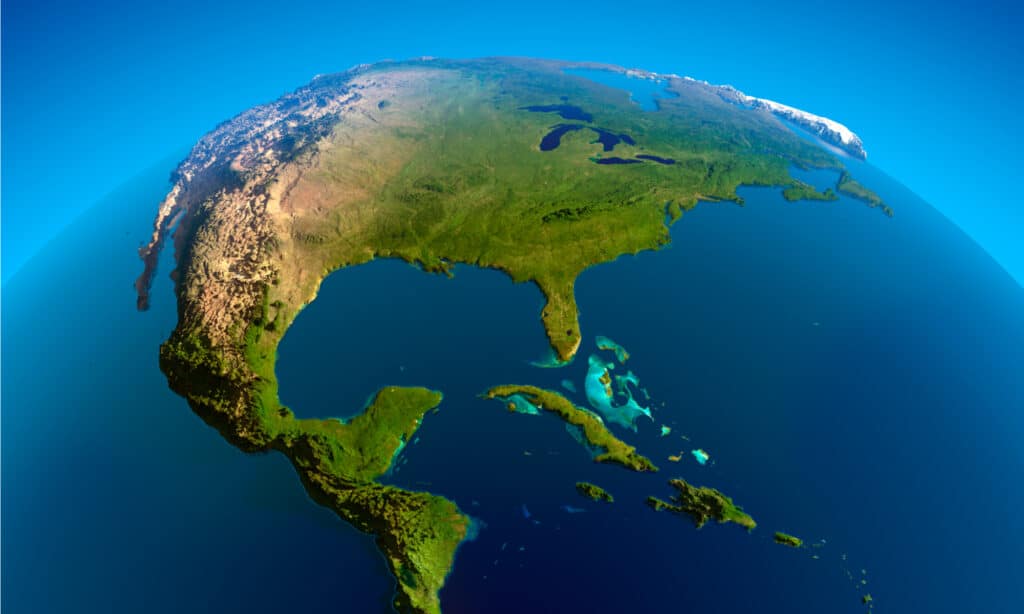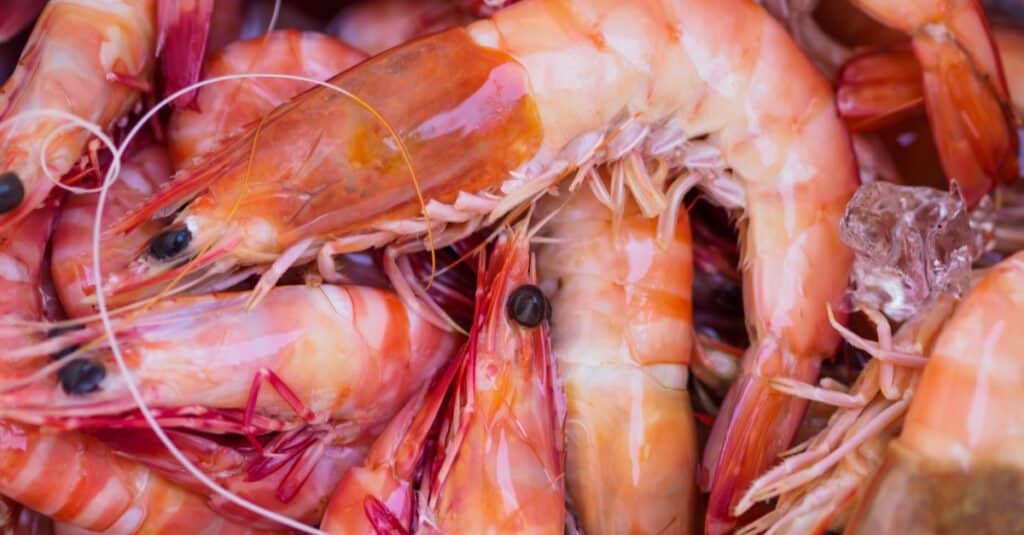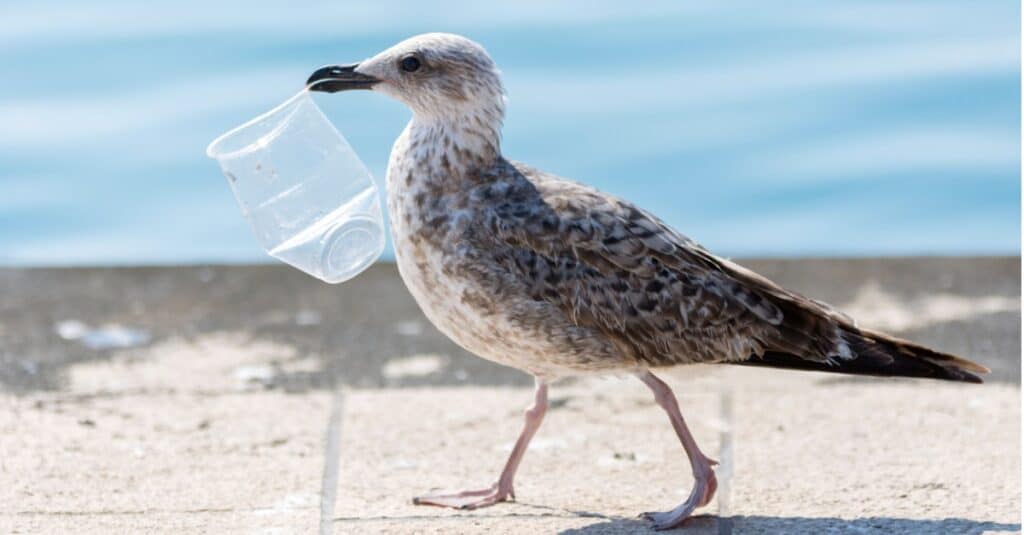The Mississippi River flows straight through the heart of the US. From Minnesota all the way down through Louisiana to the Gulf of Mexico. It provides water for agriculture, electricity via dams, and serves as an important transportation avenue for grain, coal, and iron ore. But there are some aspects of the Mighty Mississippi that are troubling. Think about the destructive floods, its massive Dead Zone, and the problem with pollution. Let’s discover the dark side of the Mississippi River.
Floods: What were the three worse floods of the Mississippi River?

There have been multiple floods of the Mississippi River including the most destructive in 1927, 1993, and 2011.
©This file is lacking author information. / public domain – License
1. The Great Flood of 1927
The worst flood of the Mississippi River occurred in the spring of 1927. Several months of heavy rains led up to the Mississippi River not being able to contain the water any longer. On April 16 the levee in Illinois broke, then the Mound Landing Levee gave way on April 21, soon the Mississippi was overflowing all the way from Illinois down to Louisiana. It took over 16 million acres and at one spot in Vicksburg, Mississippi the river was 80 miles wide! It is reported that 640,000 people were displaced, thousands of acres of crops were ruined and there were 246 fatalities. Definitely a dark side of the Mississippi River.
2. Great Mississippi and Missouri River Floods of 1993
The Mississippi River had several floods between 1927 and 1993 but the one that occurred between April and October during 1993 was one of the worst. It covered 30,000 square miles and included the Missouri River overflowing as well. Some of the areas along the Mississippi were flooded for almost 200 days! Businesses, homes, and farmland all covered in water. Some of the towns that had the longest flooding were Grafton, Illinois, Clarksville, Missouri, Winfield, Missouri, Hannibal, Missouri, and Quincy, Illinois. This flood destroyed 100,000 homes, 15 million acres of farmland, and there were 32 fatalities.
3. Great Mississippi Flood of 2011
In April of 2011 two major storms dumped so much rain onto the Mississippi River area that the river started to swell again. By May there was flooding along much of the Mississippi hitting the western counties of Mississippi, Kentucky, and Tennessee the worst. The President actually declared these areas federal disaster areas due to the damage. What engineers learned from earlier flooding was to have a plan for such times as these so they built the Morganza Spillway. When they open the spillway it diverts the water to flood 4,600 square miles of rural Louisiana instead of heading straight toward Baton Rouge. There were 348 fatalities due to the flooding and 24,500 homes were lost just in Louisiana and Mississippi.
The Dead Zone: What is the dead zone and why is it a problem?

An area in the Gulf o Mexico is considered a dead zone due to the high levels of phosphorous and nitrogen.
©Anton Balazh/Shutterstock.com
The Dead Zone is an area in the Gulf of Mexico where there is too much seaweed and algae. They call this a hypoxic area of water. Here are the problems that it causes:
- Algae blooms can get really large and block the sunlight for plants and fish below
- High levels of phosphorus and nitrogen leads to low levels of oxygen which leads to fewer fish and marine life
- As more fish and marine life leave to find food the whole food chain gets disrupted and the trickle effect is that the dead zone continues to get bigger
What causes the dead zone?
As the Mississippi River runs through farmland and cities, fertilizers from commercial farming and from homes seep into the river. Fertilizers contain large amounts of phosphorus and nitrogen. Sewage is another cause of the dead zone. When you think about sewage as a type of fertilizer it contains some of the same elements that contribute to too much seaweed and algae growth.
How big is the dead zone, one of the effects of the dark sides of the Mississippi River?
The Dead Zone at the end of the Mississippi River is between 5,400 sq miles and 8,776 sq miles. It fluctuates based on the seasons with it getting smaller in the winter and larger in the summer when more fertilizers are used.
What animals are most affected by the Dead Zone?

Shrimp and oysters are affected by the conditions of the dead zone.
©burnettj/Shutterstock.com
Animals like shrimp and oysters can be killed by the conditions of the dead zone. The lower than normal oxygen levels in the water cause some animals to leave while others can’t find enough food. 70% of the shrimp in the US are from the Gulf of Mexico so it has a huge effect on the shrimp industry. 60% of the oysters in the US are from the Gulf, so you can imagine what could happen to the cost of seafood if the dead zone is not fixed.
Pollution: How is the pollution of the Mississippi River a problem?

The dark side of the Mississippi River includes the problem with pollution.
©iStock.com/Robert Pleško
Did you know that the Mississippi River is the 4th most polluted river in the world? 18 million people in the United States rely on the Mississippi for their drinking water. This is a dark side of the Mississippi River that everyone can help fix. Keeping plants and trees along the edge of the river provides a buffer. Skip using fertilizers on your lawn or switch some areas to hardscapes. See if your state has a Nutrient Reduction Strategy. Be sure to dispose of your waste and recycling in the correct places so that it doesn’t end up in the river!
How can humans make the Mississippi River a healthier waterway for all?
Humans can help make the Mississippi River healthier in several ways. Climate change can have an effect on the number of floods and droughts we experience, so all of the habits we have that help climate change will help our waterways as well. Creating Nutrient Reduction Strategies that give framers options besides using large amounts of chemicals can help the dead zone. And education programs for citizens and businesses about polluting the waters need to continue so that more people are on board with keeping our rivers clean.
The photo featured at the top of this post is © Akarat Phasura/Shutterstock.com
Thank you for reading! Have some feedback for us? Contact the AZ Animals editorial team.







